With rising consumerism, patients are increasingly responsible for payments in revenue cycle management. The growth of high-deductible health plans (HDHPs) is a clear indicator of this trend. Therefore, it is important to clearly understand the patient’s responsibility for payments upfront and determine coverage.
This article highlights the importance of patient eligibility and benefits verification.
What is Patient eligibility and benefits verification?
A healthcare practice in revenue cycle management must verify the patient’s coverage for the medical services and determine their responsibility for payments. Through the patient eligibility and benefits verification process, physician practices can confirm the coverage offered by the health plan and copayments, deductibles, and co-insurance with the health plan.
Verification of eligibility promotes the collection of the coverage status and reduces the likelihood of claims getting denied. It enables healthcare providers to collect payments from patients proactively and prevents delays in cash realization

Information to be provided for Patient Eligibility and benefits verification
One of the fundamental components of the front-office tasks is to collect the patient details upfront and enable the verification of benefits by insurance verifiers.
Information insurance | Insurance verification |
1) Subscriber name 2) Patient name 3) Patient’s relationship with the subscriber 4) Patient date of birth 5) Patient gender 6) Patient member number 7) Group name and number 8) Plan type 9) Coverage date (policy effective date | 1) Deductibles 2) Co-pays 3) Co-insurances 4) Payable benefits 5) Patient policy status 6) Effective date 7) Type of plan and coverage details 8) Plan exclusions 9.) Claims mailing address 10) Referrals & pre-authorizations 11) Life-time maximum, and more |
Healthcare providers must train staff members on the insurance verification processes. Efficient processing reduces the likelihood of denials and accelerates the cash flow cycle.
Electronic and manual eligibility verification processes
Most payers have made available interfaces to check eligibility online. By verifying eligibility electronically before the scheduled patient appointment, you will be able to
Get accurate information about the patient’s insurance status and understand the benefits of the health plan
Determine if you must collect co-pay at the time of service
Update insurance details
Get patients to update primary care physician details
Sometimes, it may be necessary to call the payer with questions related to prior authorization requirements or clarify some eligibility and benefits elements.
Timeliness of eligibility checks
Healthcare providers must check eligibility at least 48 hours before the visit. Should this not be possible, it can be done in real-time during check-in before the treatment. Timely eligibility checks help you reduce claim rejections and denials. Most electronic health records and revenue cycle management systems have electronic eligibility checking functionality. By verifying the patient’s coverage before care delivery, your practice will be able to reduce denials and improve revenue realization.
Importance of process documentation
The needs of your practice are unique. A substance use support clinic has very different eligibility verification requirements from a hospital or radiology clinic. Hence, each institution must create specific eligibility and benefits verification workflows. All your team members need to collaborate effectively and ensure efficient completion of all steps.
Checklist for Eligibility Verification in Revenue Cycle Management
The following are some of the best practices for the patient eligibility and benefits verification process:
Check if the plan is active
Always quiz the patient about any impending or recent insurance changes
Check if the patient has multiple insurances – primary, secondary and tertiary. Ensure that the patient has updated the Coordination of Benefits (COB) with each payer
As a significant percentage of the population in the United States is aging, verify the Medicare coverage for patients who are above 65 years of age.
Understand if you need prior authorization or a referral for the specific medical service. If referrals or authorizations are needed, please obtain the same and update the revenue cycle management system.
Confirm if the patient’s policy covers the procedure
Some plans may stipulate the number of visits and time frame in which medical services can be delivered and have a ceiling on the benefit limits. The front office must obtain these details.
Specific services such as behavioral and mental health, substance abuse, and addiction may require a call to the insurance company. You may not be aware of these requirements and must refer to payer-specific guidelines.
Patient responsibility for payments. Collect the payments for deductibles, copayments, and co-insurance based on the policy details. Pursuing patient collections can be tedious, and you must collect as much upfront as stipulated.
Additional information
Social determinants of health are becoming an essential element of care delivery and promote healthcare equity and access. Characteristics such as race, gender, ethnicity, date of birth, preferred language, etc., are essential for Meaningful Use reporting. These characteristics are also crucial for health equity studies
Outsourcing Eligibility and benefits verification process
An outsourced service provider can help you carry out eligibility and benefits verification processes in revenue cycle management. Their training processes help you get expert workers at reduced costs and reduce the workload on your revenue cycle management team. Some of the benefits of outsourcing are:
Free up your staff’s time to focus on other patient experience improvement and revenue cycle management functions
Speed up time to care delivery
Reduced denials and accelerated cash flow
Reduced costs through labor rate arbitrage
Well maintained policies and procedures
Shifting the focus to denial prevention by reducing the number of eligibility and benefits related denials
Medical Billing Wholesalers eligibility and benefits verification competencies
Efficient eligibility and benefits verification processes are essential for your organization’s financial well-being. The process also accounts for the highest component of claim denials.
You need to learn from each denial and constantly improve. Medical Billing Wholesalers provides seasoned revenue cycle management workers who can support your front-office staff with eligibility and benefits verification processes. Our comprehensive revenue cycle solutions can help you reduce costs and improve efficiency.

